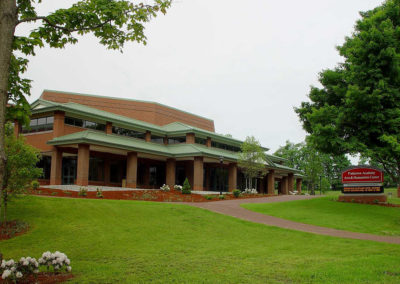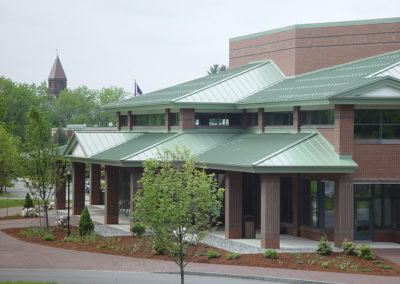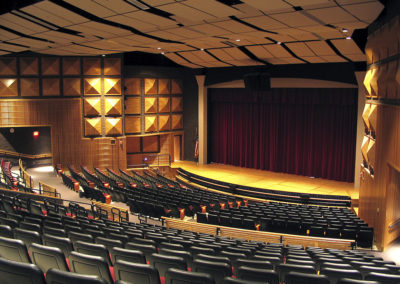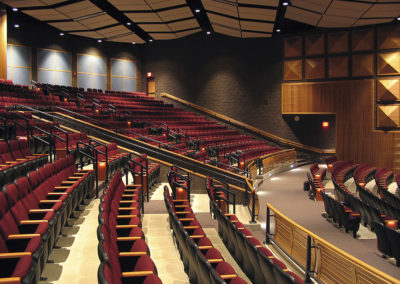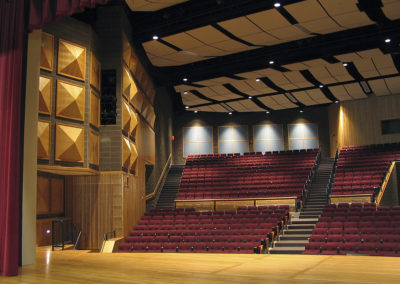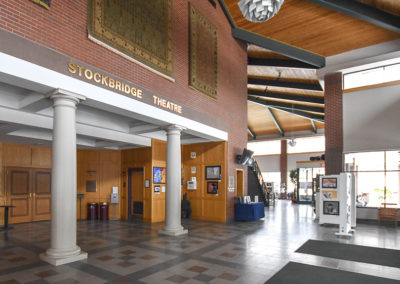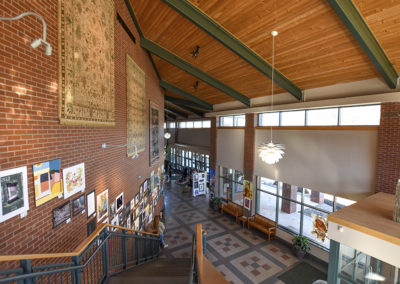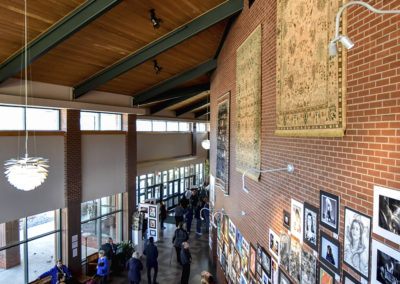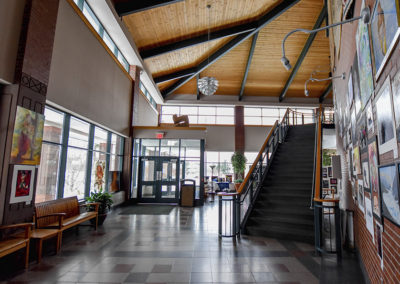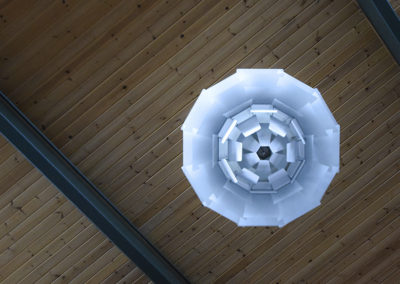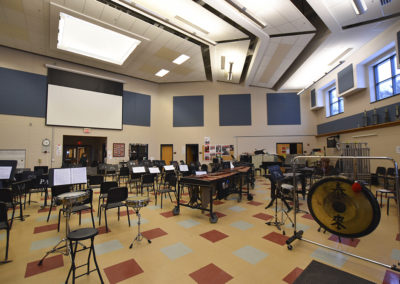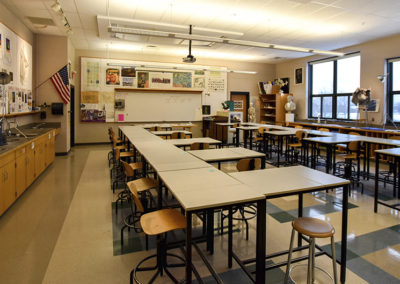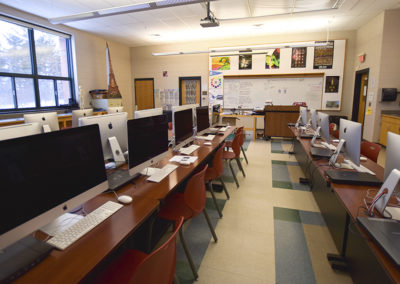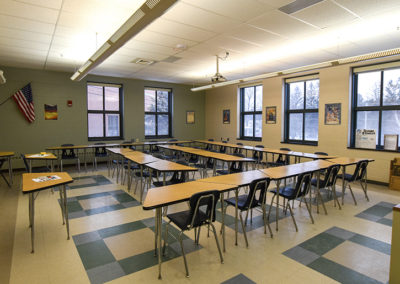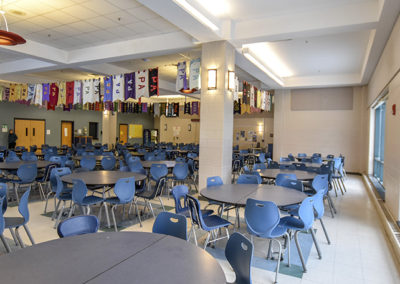Pinkerton Academy Arts & Humanities Center
Derry, NH

“Our students are so very proud.”
– Mary Anderson, Headmaster
The new Pinkerton Academy Arts and Humanities Center is organized around the requirements of the four departments it houses: Drama, Music, Art, and English. At its core is the 892 seat auditorium, with its 3,300 S.F. stage, surrounded by support spaces such as set and costume shops, storage, dressing rooms, green room, black box theatre, ticket office and public toilets. The auditorium is outfitted with a full fly loft, orchestra pit filler, stage sound reflector shell, and professional sound and light systems.
The Music Department is comprised of band and chorus ensemble rooms, with accompanying practice rooms, offices, and storage spaces. There is a state of the art MIDI computer-based music classroom, and a tunnel connecting the band room to the orchestra pit for hidden performer entrances. The entire music department is wired to the auditorium by closed circuit TV. The band and chorus ensemble rooms are isolated acoustically from each other, the auditorium, and the rest of the building to optimize sound control.
The Art Department is located on the second floor behind the stage, which allows high classrooms, skylights and a minimum of student traffic through the area. Each of the five studios has a particular function, including basic art, painting, sculpture, photography, commercial art and ceramics. The ceramics studio is on the first floor and features a stone-lined outdoor work area.
The English Department is housed in a 3-story classroom wing closest to the rest of campus – of paramount importance when 3,100 students must change classes on a large campus in six minutes. All classrooms have indirect lighting, large operable windows, and extensive data wiring.
The 6,000 S.F. auditorium lobby was requested by the board of trustees as a space that would be inspiring as an entrance to the theater and also would serve as an art display space for student and visiting artist work. With its warm brick walls, wood ceiling, and colorfully patterned terrazzo tile floor, the lobby serves its users well. To complete the space, our office coordinated the installation of the carpet wall hangings, artwork, plants, and furniture, which were included in the budget.
Since the site was tight on space and sloped 30′ across its length, the building steps 6′ at two locations, and several granite retaining walls were used, including one used to create an outdoor eating space for the senior cafeteria. Included in the project is the redesign of a student pedestrian plaza between the Ek Science Building and the Arts Center, the addition of about 175 parking spaces, and the construction of 8 tennis courts.
The building is constructed of concrete block bearing walls with a brick veneer accented by a precast concrete wall base, banding, and column surrounds. The roof is similarly maintenance free with a TPO heat welded membrane at flat areas and standing seam metal roofing at pitched locations. All windows and storefront are aluminum with a baked on Kynar finish and low-E glazing.
The building was designed to be sympathetic to the original 1880’s Pinkerton Building through its palette of materials, colors, and textures, yet decidedly individual in terms of its massing and detailing. In all respects, the Arts and Humanities Center serves the town, school, and students very well, and is a much appreciated addition to the growing campus.
As seen in the surrounding photos, the auditorium is a richly detailed space, dominated by the burgundy tones of the seats and proscenium curtain, the warm glow of red oak woodwork, and the textured feel of the fluted block walls. The fully radiused seating risers ensure that every seat directly faces the stage, and the 6″ front risers and 12″ back risers provide clear sight lines for everyone. Very comfortable, high-backed seats complete the experience for the audience.
A multitude of sound reflecting, diffusing, and absorbing surfaces produce very even sound levels throughout the space. These panels can be seen in the photos as pyramidal oak wall panels near the stage and varyingly angled reflecting clouds at the ceiling, and as four thick wound absorbing fabric panels on the back walls. A 1 1/2″ thick layer of tectum panels cover the walls behind the vertical oak slats at strategic locations.
